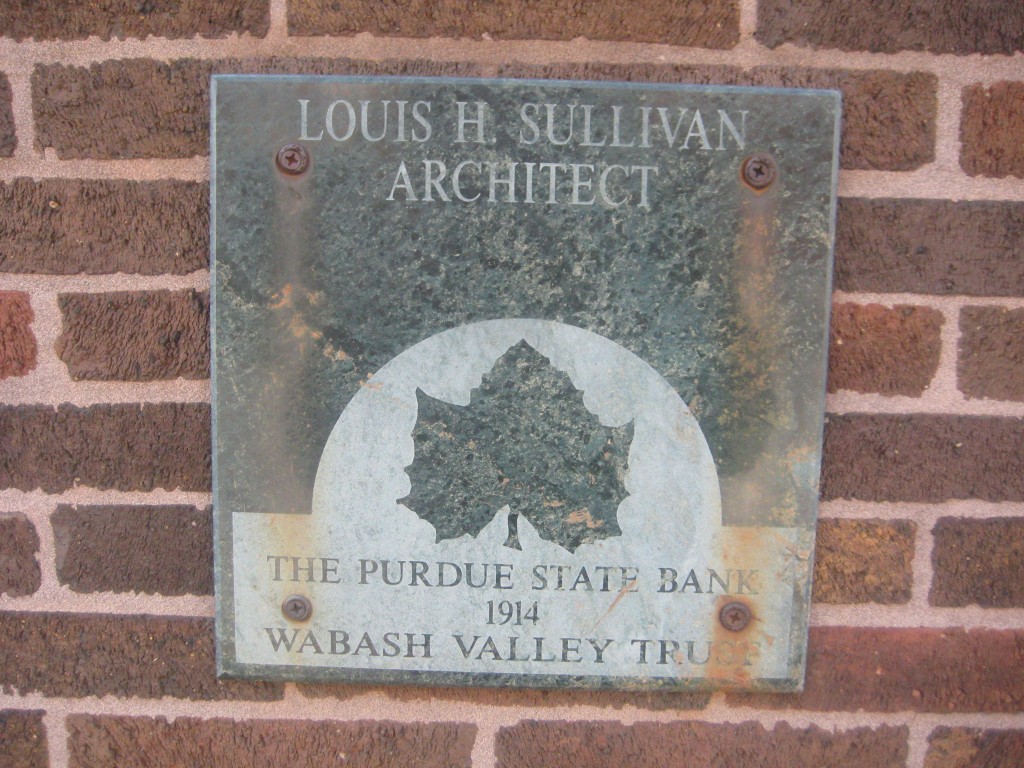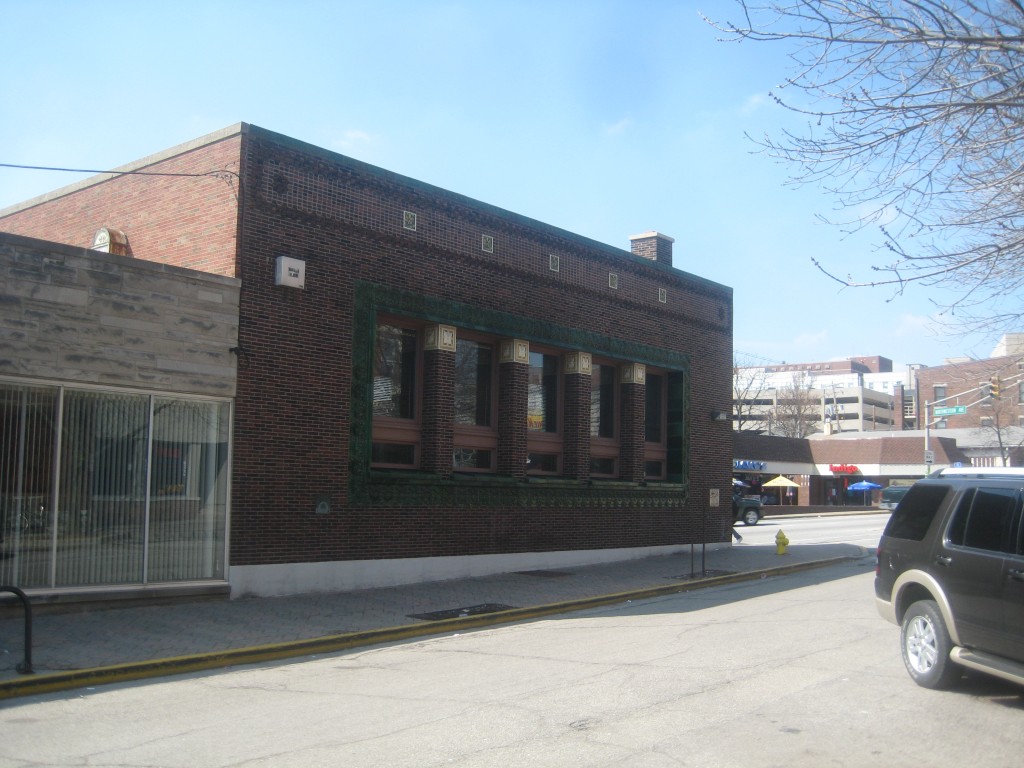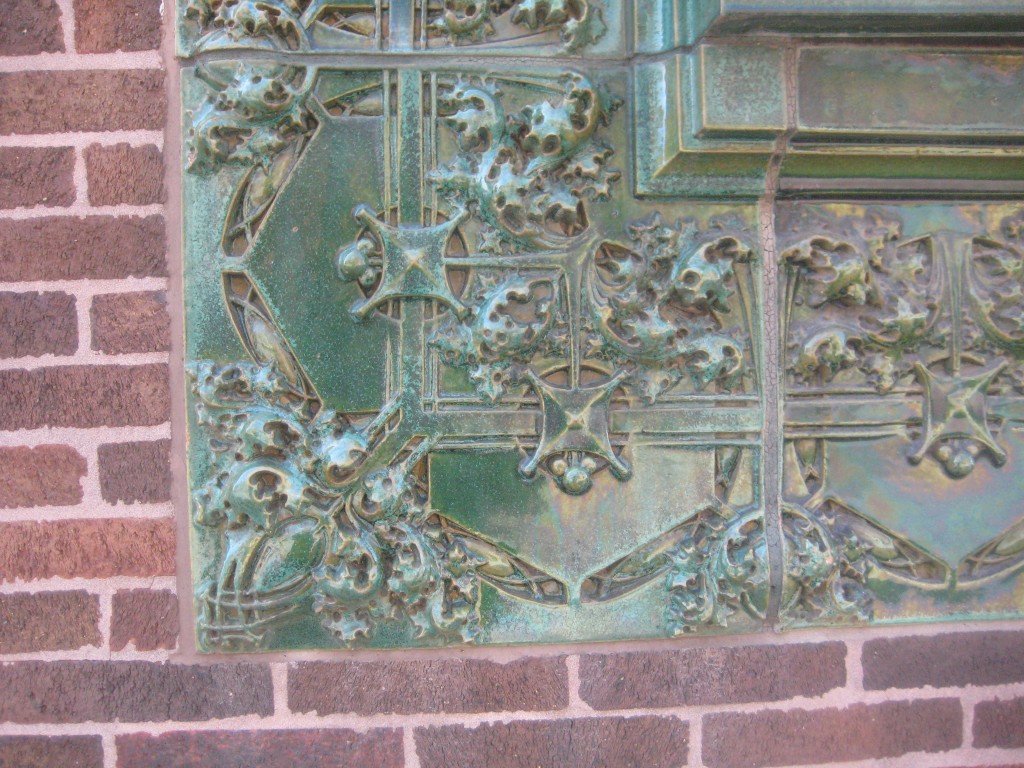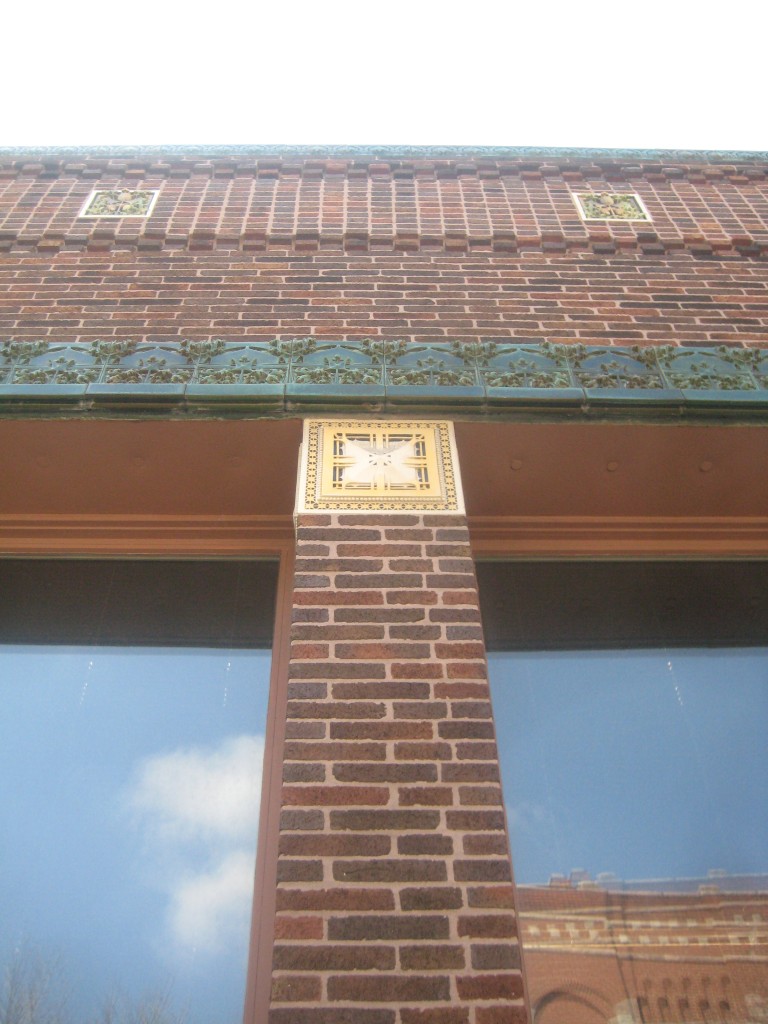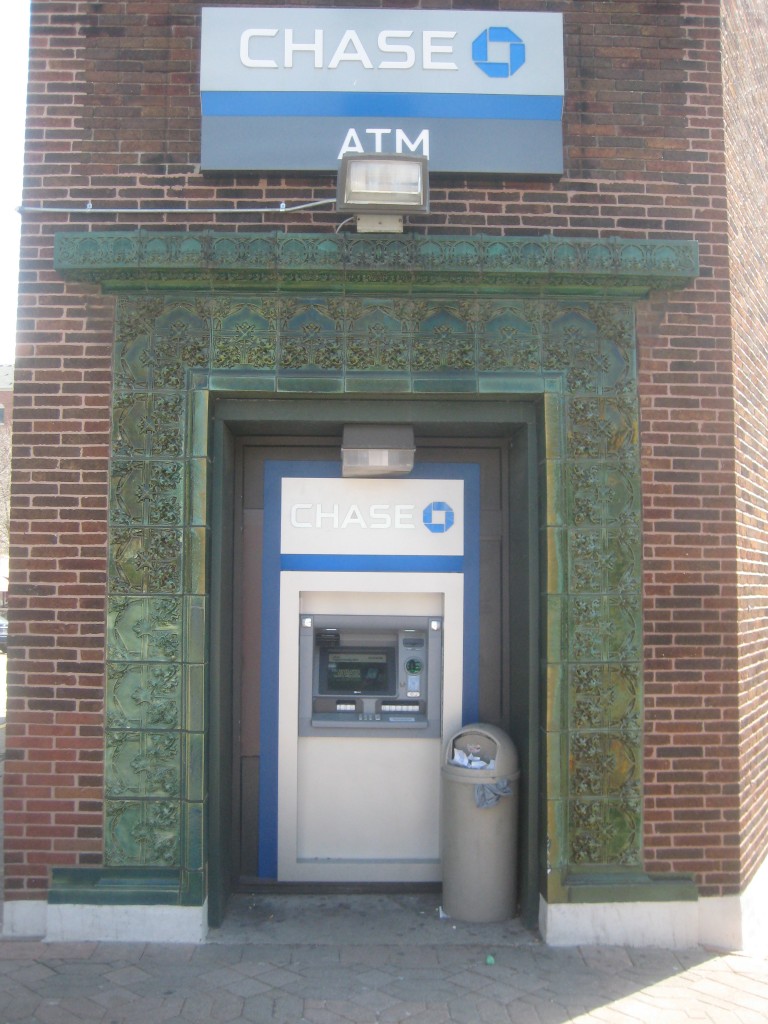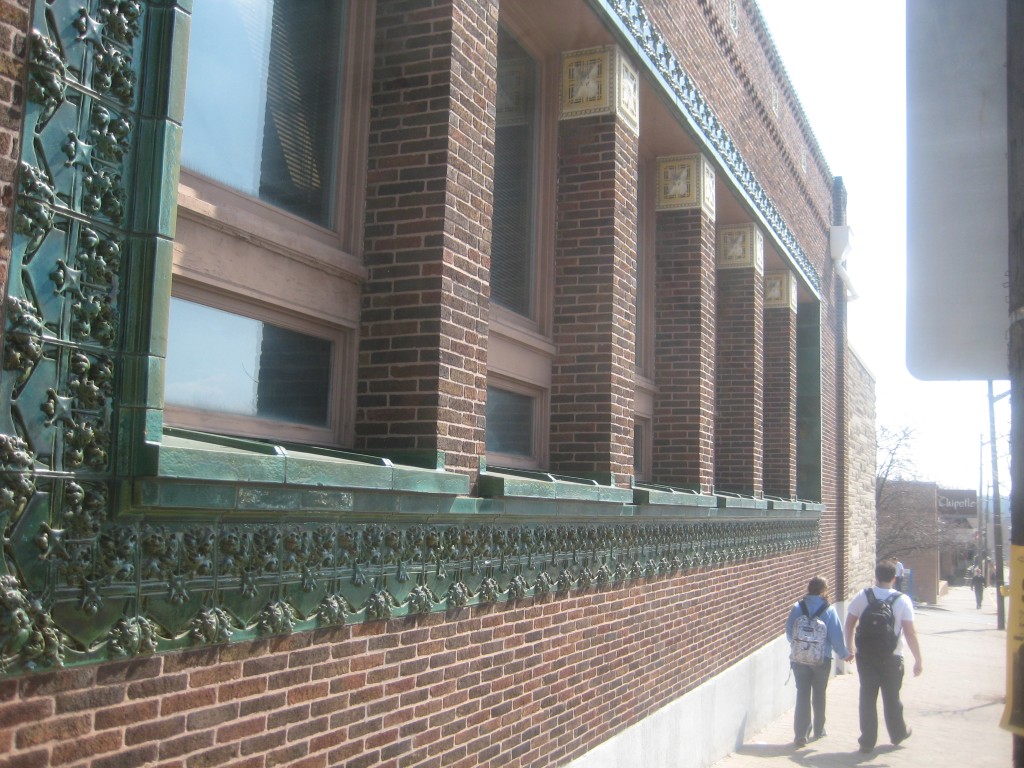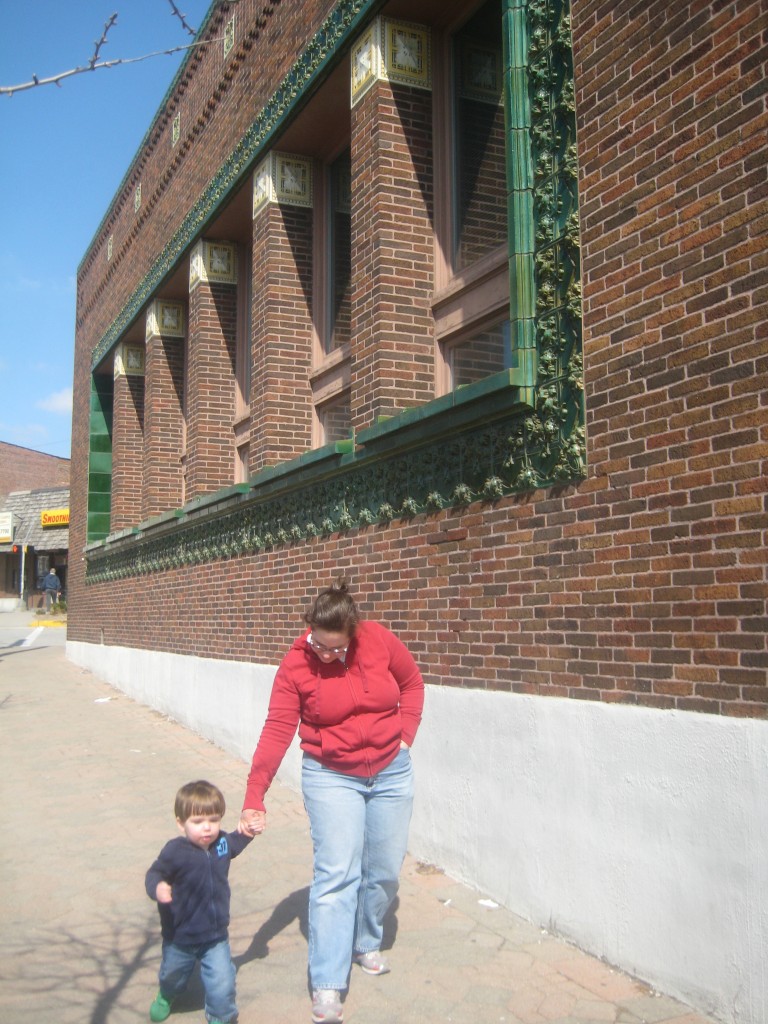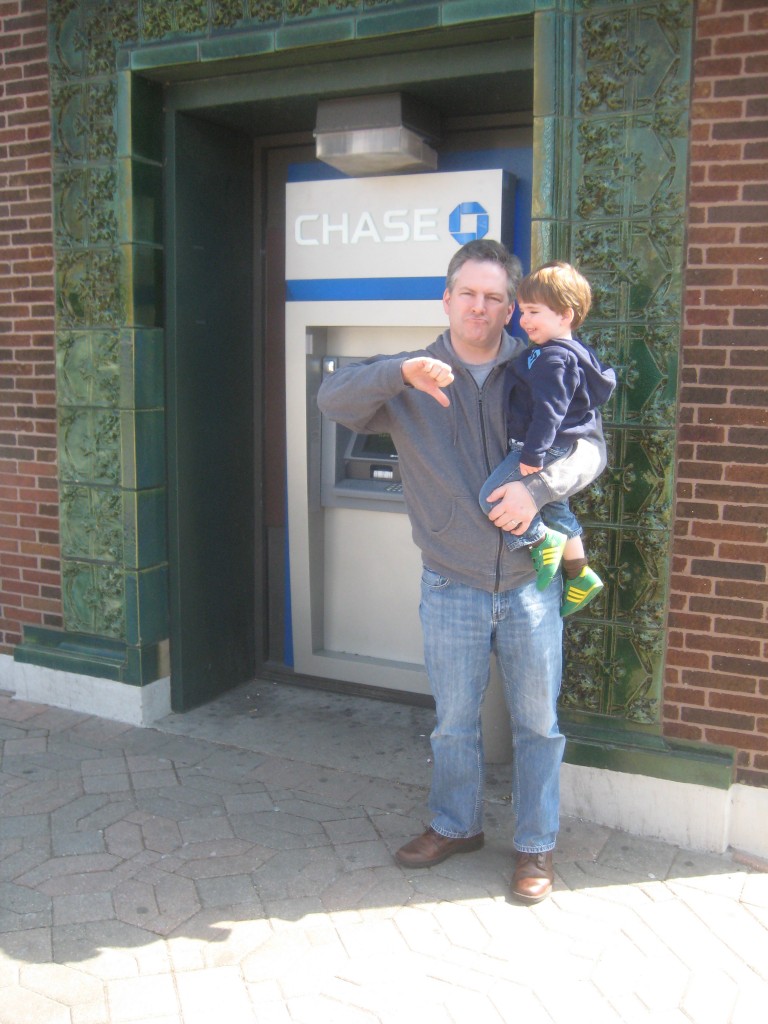From LiveJournal April 3, 2010
Mike, Nate, and I took a five-day trip down to the upper south this past week, our main destination Louisville, KY. Fortunately, Mike is a history teacher, I’m a devotee of obscure Americana, and we both hold a special affection for Eisenhower-era road-tripping. The Midwest (aka the flyover zone to many of you) offers more history and mundane esoterica than you might think. Yes, prepare yourself for long hours of tooling down lesser expressways, passing field after field of corn, wheat, and sorghum–but the destination is often its own reward; that is if you care about 19th century architects, Lincolniana, and the biggest whatchamacallits in the world.
Our first stop, after passing a breathtakingly futuristic field of giant windmills along route 65 (an antiseptic agricultural environment suited to 70s-era dystopic film fantasies), was West Lafayette, IN. The town is home to both Purdue University and one of Louis Sullivan’s eight jewel box banks. After several years on top of the world with his partner Dankmar Adler, during which he created gorgeous edifices like Chicago’s <a href=”http://auditoriumtheatre.org/wb/”>Auditorium Theater</a> and the <a href=”http://en.wikipedia.org/wiki/Wainwright_Building”>Wainwright Building</a>, Sullivan fell on hard times, not helped at all by the fact that he was an arrogant bastard. Toward the end of his career he received smaller commissions, namely the “jewel boxes,” little bank buildings strewn across the Midwest. But like Chinese micro-calligraphy across a grain of rice, Sullivan transmitted large ideas across a small canvas.
Sullivan designed the Purdue State Bank in 1914, reportedly as part of a contest. He won, after a fashion, but costs ran to about $14,000 to build the bank, and the <i>Lieber Meister</i> made just a fraction of that, barely covering his expenses. More understated than the banks in <a href=”http://www.grinnelliowa.gov/SullivanBank/JewelBoxBanks.html”>Grinnell, IA, and Sidney, OH</a>, the building has a unique and elegant beauty. The bank will have its centennial in just four years, but it remains timeless; undoubtedly old, but unable to be pinioned to any particular era.
It’s also been aesthetically desecrated. Walking around the bank you first see the grey, bunker-like addition tacked on the back, housing the modern Chase bank. To enter the Sullivan portion you need to enter the bunker doors and turn right, only to see that the guts have been scooped out and replaced with drywall, ramps, and cubicles. Outside, the elegant archway that once stood over the doorway now houses an ATM. Sharper architectural mavens than myself have also pointed out the completely erroneous pattern formed by new tuckpointing. It seems likely an oblivious everyday work crew was enlisted rather than anyone with any sense of Sullivan’s legacy. It’s like finding a Faberge egg with its insides smashed and picked out, then replaced with a plastic dog turd.
Boo, West Lafayette. Boo.
